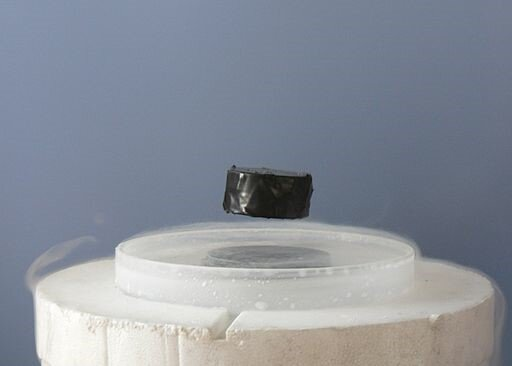Sep 8 2020
At the University of Tsukuba, a researcher has come up with a new explanation for how superconductors subjected to a magnetic field can return—without losing any energy—to their earlier state once the field is removed.
 Image Credit: University of Tsukuba.
Image Credit: University of Tsukuba.
This study could pave the way for a new theory of superconductivity and a more environment-friendly electrical distribution system.
Superconductors are a family of materials that exhibit the remarkable ability to conduct electricity without any resistance. As such, an electrical current can indefinitely circle around a loop of superconducting wire. The obstacle is that it is necessary to maintain these materials very cold, and more so, a strong magnetic field can make a superconductor to recover back to normal.
Previously, it was considered that it is not easy to reverse the transition from being superconducting to normal induced by a magnetic field. This is because the energy would be dissipated by the typical process of Joule heating.
This mechanism, where the electrical energy is converted into heat by the resistance in normal wires, is precisely what enables the use of an electric stovetop or space heater.
Joule heating is usually considered negatively, because it wastes energy and can even cause overloaded wires to melt. However, it has been known for a long time from experiments that, if you remove the magnetic field, a current-carrying superconductor can, in fact, be returned to its previous state without loss of energy.
Hiroyasu Koizumi, Professor, Division of Quantum Condensed Matter Physics, Center for Computational Sciences, University of Tsukuba
Professor Koizumi has now offered a new explanation for this phenomenon. Although the electrons couple up and move synchronously in the superconducting state, the actual reason behind such a synchronized motion is the existence of the so-called “Berry connection,” which is characterized by the topological quantum number.
This number is an integer and if it is a nonzero number, then there is a flow of current. Consequently, this supercurrent can be abruptly turned off by modifying this number to zero in the absence of Joule heating.
Previously, James Clerk Maxwell, the founder of modern electromagnetic theory, hypothesized a similar molecular vortex model that visualized space being filled with the rotation of currents in small circles. As everything was spinning in the same manner, it reminded Maxwell of “idle wheels”—gears used in machines for this purpose.
The surprising thing is that a model from the early days of electromagnetism, like Maxwell’s idle wheels, can help us resolve questions arising today. This research may help lead to a future in which energy can be delivered from power plants to homes with perfect efficiency.
Hiroyasu Koizumi, Professor, Division of Quantum Condensed Matter Physics, Center for Computational Sciences, University of Tsukuba
Journal Reference:
Koizumi, H. (2020) Reversible superconducting-normal phase transition in a magnetic field and the existence of topologically protected loop currents that appear and disappear without Joule heating. EPL. doi.org/10.1209/0295-5075/131/37001.